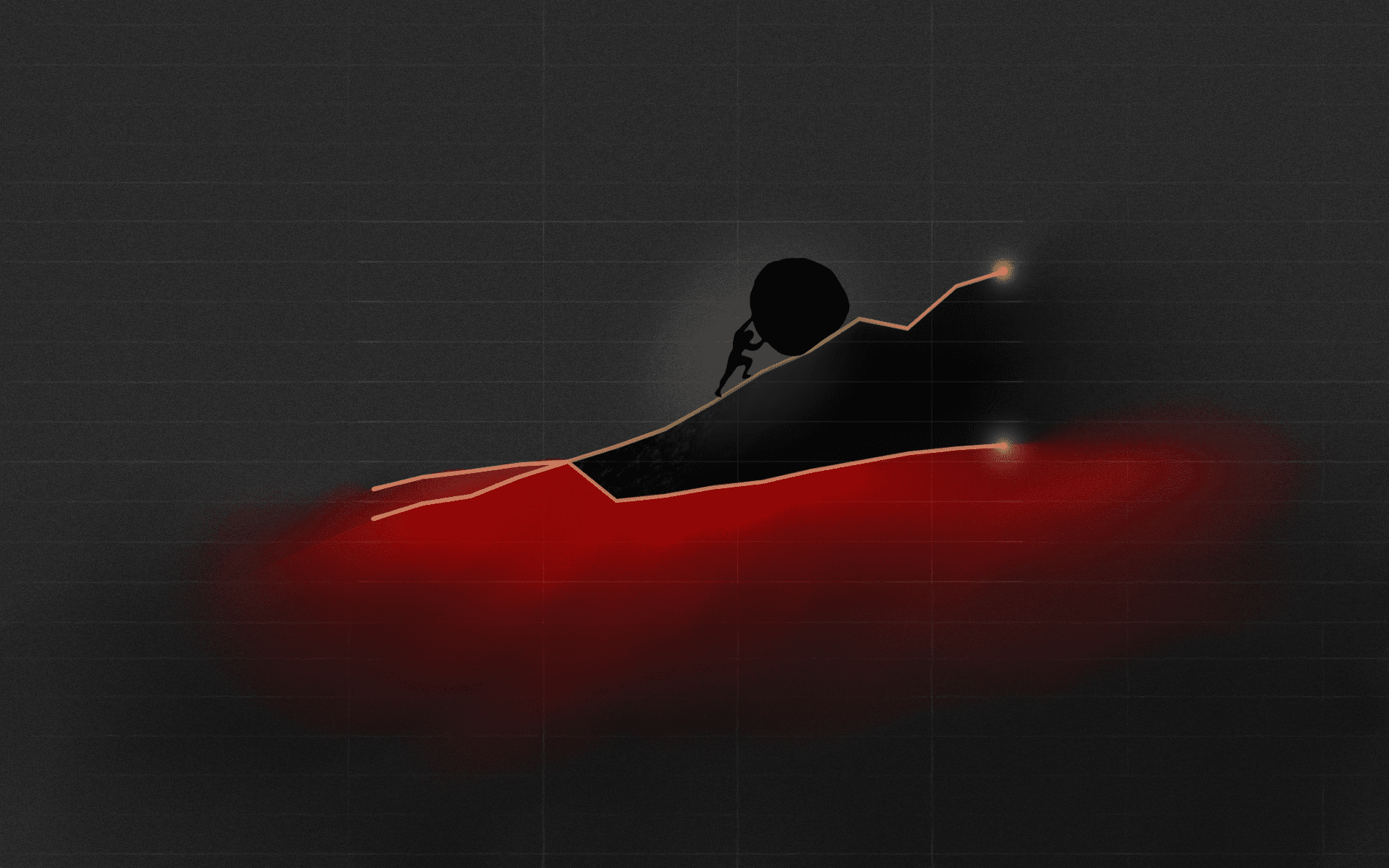- Category
- War in Ukraine
Russia’s GDP Hits Record High, But Economic Cracks Are Harder to Hide

Russia’s government is promoting a record-high GDP as evidence of its resilience against Western sanctions. But behind the numbers lies a different story—soaring inflation, collapsing businesses, and a workforce increasingly funneled into war.
In early February, Russian Prime Minister Mikhail Mishustin reported to the country’s leader, Vladimir Putin, that Russia’s nominal GDP had reached a historic high, touting it as proof that the country had “overcome sanctions pressure.” Yet Mishustin’s report conveniently omitted key realities: record food inflation, a sharp decline in foreign currency savings, and other troubling economic indicators.
Russia’s GDP grows, but businesses collapse
Russia's nominal GDP for 2024 reached 200 trillion rubles ($2 trillion), marking an all-time high. The economy grew by more than 4%, surpassing global averages.
Despite these statistical achievements, even Russia's censored and often government-controlled media regularly report on severe financial difficulties faced by major companies that were once market leaders.
By fall 2024, Russian real estate giant Samolet Group was on the brink of collapse. The company began significantly delaying project completions, shareholders started pulling out, and thousands of employees were laid off in recent months. Just a week ago, reports surfaced about financial troubles in its subsidiary that provides public utility services.
One of the primary reasons for the company's struggles is a lack of demand. Russians are increasingly reluctant to take out mortgages, as interest rates have surpassed 20% annually. Consumer credit card rates have exceeded 40% per year. The Central Bank of Russia raised its key interest rate to 21%, yet even this aggressive monetary policy has failed to rein in inflation.
Unwelcome records
Inflation in Russia accelerated by nearly a third in 2024, reaching 11.5%, despite the Central Bank's interest rate hike to its highest level in two decades and government efforts to control retail prices. In January 2025, contrary to economists' hopes, prices continued rising at the same pace as in 2024.
While the Kremlin touts "stability," household foreign currency deposits have dropped to just 7% of total savings—a level not seen since the 2008 global financial crisis when Russians rushed to withdraw their money from banks.
Since 2022, many Western companies have left Russia, and the ruble depreciated by an average of 10-13% against major world currencies in 2024 alone. Under classical macroeconomic theory, such devaluation should stimulate domestic production, but Russian-made goods are becoming less competitive.
Russia’s war consumes its workforce
One stark example of Russia's economic downturn is Gloria Jeans, once one of the country's most successful clothing manufacturers. By the end of 2023, the company operated more than 700 stores across Russia, Belarus, and Kazakhstan. Yet, by the end of 2024, it had shuttered all its Russian production facilities and moved operations to Asia.
Gloria Jeans Chairman Vladimir Melnikov offered a restrained explanation, citing a lack of new technologies to improve business efficiency and declining profitability due to workforce shortages.
"Some leave for the 'special military operation ' he said [both, men and woman]. “Others prefer factory jobs making standardized military uniforms with higher salaries and bulk orders.”
The war is now the primary driver of Russia's GDP growth. The Russian army and defense-related industries have become the country's largest employers. Few sectors can compete with the incentives offered to those willing to go to war against Ukraine.
While most regions of Russia are seeing a sharp decline in military recruitment, the Samara region saw a surge in January, making it difficult to find available dormitory housing due to an influx of new recruits. The regional government increased enlistment bonuses to 4 million rubles ($40,000), though basic training has been reduced to just two days before recruits are deployed to assault units.
Some recruitment efforts border on the surreal. In certain regions, Russia now runs a "bring a friend to the army" program: refer a friend to a military enlistment office, and you'll receive a 100,000-ruble ($1,000) reward.
Meanwhile, budget shortfalls are hitting essential services. In the Kemerovo region, local authorities launched mass layoffs in kindergartens due to declining regional revenue, largely caused by a crisis in the coal industry.
"We were told outright that there's no money in the budget,” a local source said. “The payroll fund has been slashed, and teachers will have to be laid off. Each kindergarten will have to cut staff down to three teachers for every two groups, with no exceptions. Music instructors, choreographers, and physical education teachers are among the first to go.”
Russia’s GDP rises, but the money runs dry
Russia’s nominal GDP growth is largely driven by skyrocketing government spending—most of it poured into the war—along with inflation and currency devaluation. This raises serious doubts about the sustainability of such economic expansion. Despite the GDP surge, non-military sectors of the Russian economy are struggling more than ever.
Even the defense industry may soon face stagnation. The Kremlin has earmarked a record $142 billion for war spending in 2025, but whether Russia can actually secure these funds remains uncertain. Russia’s Finance Ministry’s revenue projections seem overly optimistic given the country’s worsening economic realities.
Russia has already drained much of its financial reserves, depleting the National Wealth Fund to levels not seen since its inception in 2008. As sanctions continue to bite, financing the war is becoming increasingly difficult.
While Russia has made massive investments in its war machine, the real outcome will be little more than statistical victories—nominal GDP growth—while entire industries collapse.
-206008aed5f329e86c52788e3e423f23.jpg)
-c42261175cd1ec4a358bec039722d44f.jpg)
-46f6afa2f66d31ff3df8ea1a8f5524ec.jpg)
-6359eca46c72bde40a90abaaadd6eaa8.png)
-29a1a43aba23f9bb779a1ac8b98d2121.jpeg)

